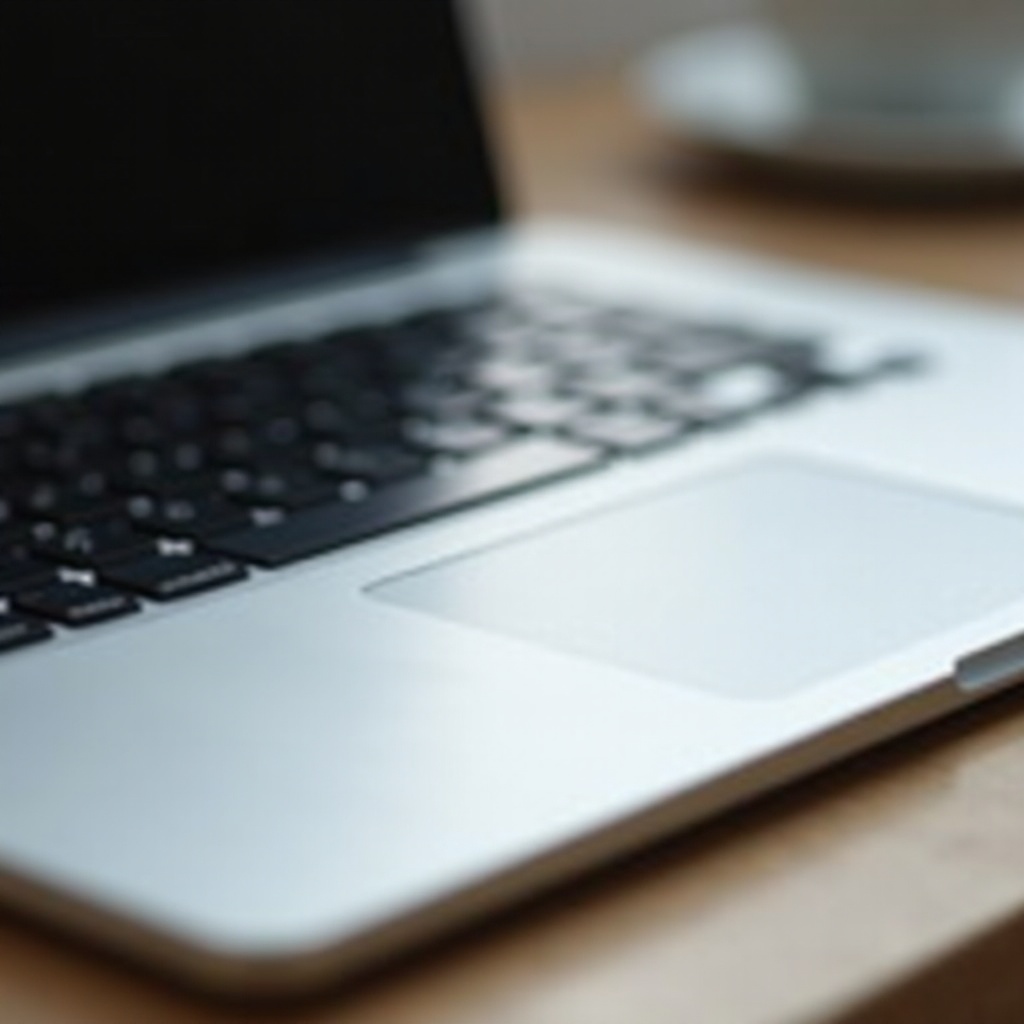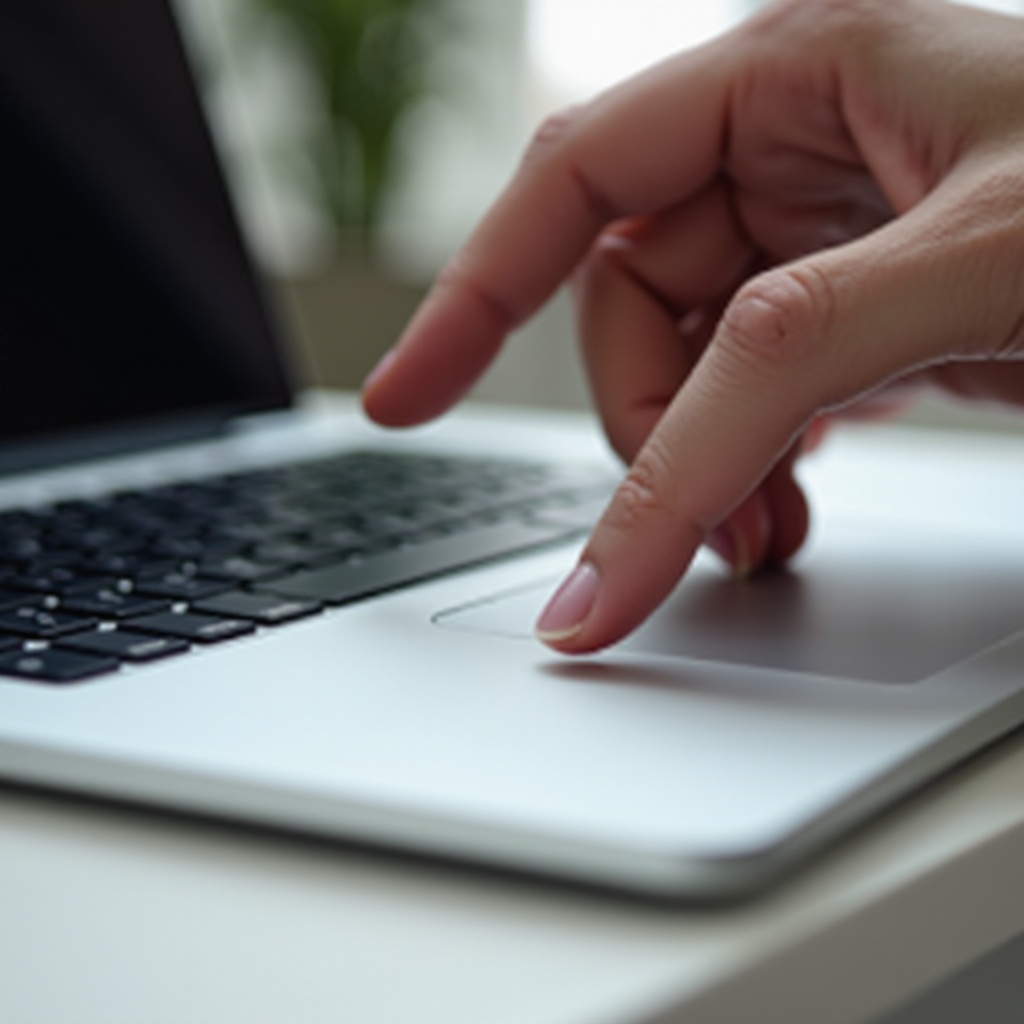
Introduction
Encountering an unresponsive MacBook trackpad can significantly disrupt your workflow, affecting even the simplest of tasks. This comprehensive guide is designed to address the common issue of a MacBook trackpad not clicking and provide you with step-by-step troubleshooting methods. Whether you’re navigating software-related solutions or inspecting hardware components, you’ll find clear guidance to restore your trackpad’s functionality. Dive in and explore how you can tackle these issues effectively.

Identifying the Problem
Understanding the specific nature of your trackpad issue is crucial for finding the right solution. Is it the entire trackpad surface that isn’t responding, or just a particular section? Are gestures working while clicks fail? Noting these details helps pinpoint whether the root cause is software-related or a hardware malfunction. By identifying symptoms like erratic operation or sporadic functionality, you can streamline your approach to fixing the issue. Armed with this knowledge, let’s proceed to some basic checks and necessary solutions.
Preliminary Checks
Before you embark on more intricate solutions, execute a few preliminary checks. These simple steps can often lead to an immediate resolution.
-
Check Battery and Power Status:
A low battery or power issues might be behind the trackpad not clicking. Ensure that your MacBook is adequately charged or plugged in directly.
-
Software Update Verification:
Apple periodically releases updates that could fix bugs causing device issues. Go to System Preferences > Software Update to confirm if there are any pending updates.
-
Review Trackpad Settings:
Head to System Preferences > Trackpad and make sure options like ‘Tap to Click’ or ‘Force Click’ align with your intended usage.
Performing these basic checks might unveil straightforward solutions or help narrow down the potential causes of your trackpad issues.
Software-Based Solutions
If the issue persists after initial checks, explore software-oriented solutions. These methods address possible problems within macOS that might be preventing the trackpad from functioning correctly.
-
Reset Trackpad Preferences:
Navigate to System Preferences > Accessibility > Mouse & Trackpad. Disable any active settings, restart your Mac, and then enable the desired options again.
-
Use Safe Mode to Diagnose Issues:
Safe Mode disables certain startup applications, making it easier to identify conflicts. Restart your Mac while holding the Shift key and see if the trackpad works better in this mode.
-
Run macOS Disk Utility:
Open Applications > Utilities > Disk Utility to examine and repair disk errors. Choose your startup disk and select First Aid to address issues that might affect the trackpad.
By addressing software discrepancies, many trackpad clicking issues can be efficiently resolved.
Hardware Troubleshooting
Should software solutions prove inadequate, investigate potential hardware-related issues. Physical elements such as dirt particles can impact trackpad performance.
-
Inspect for Physical Obstructions:
Make sure the trackpad surface is clear of any debris or items that could interfere with its mechanical functioning.
-
Clean the Trackpad Surface:
Use a microfiber cloth to gently wipe down the trackpad, eliminating any contaminants that could affect use.
-
Test with an External Mouse:
By connecting a mouse, you can determine if the issue is confined to the trackpad. If the mouse works smoothly, the trackpad hardware might be to blame.
Alarmingly persistent issues following these checks may necessitate more in-depth troubleshooting.

Advanced Troubleshooting
For stubborn problems unfixed by simpler steps, advanced troubleshooting is required. These procedures involve managing internal controls and connections.
-
Reset the SMC (System Management Controller):
As the SMC manages power functions, resetting it may solve trackpad issues. Refer to Apple’s support for specific instructions based on your Mac model.
-
Perform a PRAM/NVRAM Reset:
This reset can rectify certain settings-related issues. Start the Mac while holding Option + Command + P + R and release after about 20 seconds.
-
Inspect for Loose Connections:
If comfortable, open your MacBook to check for unfastened wires. It’s advisable to consult experts for this step to prevent accidental damage.
Engaging in advanced troubleshooting measures can correct deep-seated problems when basic solutions fall short.
When to Seek Professional Help
If none of the above solutions resolve the issue, consultation with Apple Support or visiting a certified repair center is recommended. These professionals possess the requisite tools and expertise to address severe hardware malfunctions or to facilitate replacements, ensuring your device remains unscathed.

Conclusion
Resolving a non-clicking MacBook trackpad doesn’t have to be overwhelming. Through strategic software adjustments, diligent care, or specialized technician help, solutions are within your reach. We’ve provided detailed steps to reclaim control of your MacBook’s trackpad, ensuring it functions optimally. Rest assured, with this guide, you’ll be better equipped to tackle trackpad problems and know when to seek expert assistance if necessary.
Frequently Asked Questions
Why is my MacBook trackpad not clicking?
Potential causes include software glitches, outdated settings, hardware obstructions, or internal connection issues.
How do I fix an unresponsive MacBook trackpad?
Consider resetting preferences, cleaning the trackpad, or performing SMC/PRAM resets. If these don’t work, professional help may be necessary.
Can a MacBook trackpad be replaced independently?
Replacing a trackpad involves complex tasks better left to professionals unless you’re skilled in MacBook hardware repairs.
